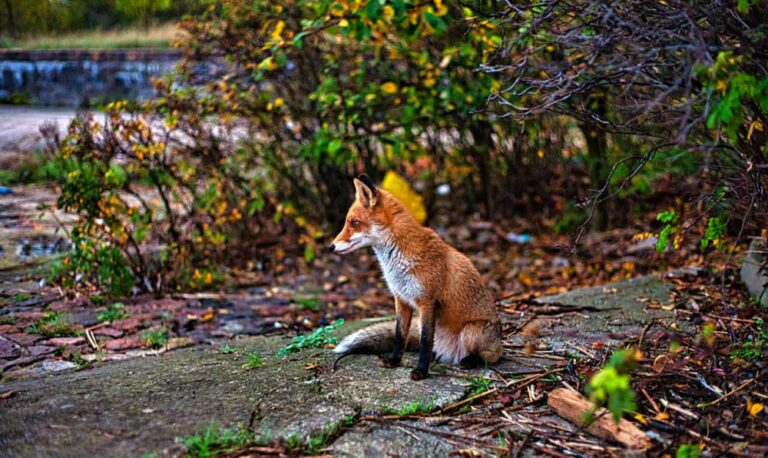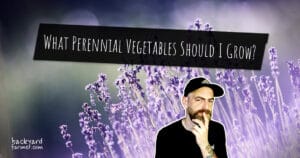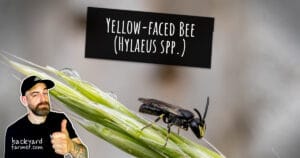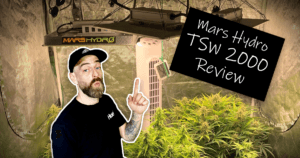How to attract wildlife to your garden
This post will explore how to attract wildlife to your garden or outside space. Our natural surroundings have been in crisis for quite some time. Due to some recent events around the world, like the Coronavirus (COVID-19), people are starting to pay attention.
According to a new study, a third of British wild bees and hoverflies are in decline.
We are living through an epoch where mass extinction is occurring and possibly by our own hands. The collective behaviour of humanity has got us into this mess – therefore, it can get us out of it, only this time, we need to impact the environment positively. A great way to do this is to attract wildlife into your garden and help it thrive, which will help restore ecosystems.
Creating a garden by planting insect-friendly plants helps the planet and creates a beautiful area bursting with the life you can enjoy. When you attract insects, you will also attract larger animals that feed on them, like birds and hedgehogs, which leads to a thriving ecosystem with wildlife in your garden.
Attracting wildlife into your garden is easier than you might expect. Like anything, the more effort you put into your wildlife garden, the more rewarding the experience will be.
Here are some things you can do to help attract and promote wildlife in your garden that are eco-friendly and easy to do.
- Building bird boxes and using bird feeders
- Letting areas of your garden grow wild
- Grow climbing plants that help wildlife
- Build an insect habitat/hotel
- A pond can help bring wildlife to your gardening
- Composting
- Supporting nocturnal wildlife
- Growing flora & fauna that support insect populations
- Leaving areas of your garden ‘untouched.’
These are great ways to help wildlife in your garden, yard or other outdoor space.
Using a combination of these methods, you will help support your local ecosystems & build a nature-friendly garden. If everyone practised these methods, we could make a huge positive impact & learn to live with nature rather than destroy it.

Building bird boxes and where to put them
Birds are great creatures to bring to your garden. They are not only wonderful to watch and listen to, but they are also very effective at keeping insect populations under control. Some bird species are good to have around when growing vegetables, as they pick off intruding slugs, snails and other invasive insects!
What time of year do you put a bird box up?
The best time to put up a bird box is in autumn, as most birds seek a suitable place to roost or feed during these months. A warm nest is essential in the winter when the cold sets in.
How to attract birds to your nesting box?
How to attract a bird to a bird box depends on what species of bird you want to attract to your wildlife garden. There are generally two types of nesting boxes:
- Open-faced
- Small-hole nest boxes.
You want to hang your birdhouse at least 5ft high to avoid predators being able to access them. The maximum height to hang a birdbox is around 12ft. Higher than this can leave birds exposed to birds of prey.
Fallen apples don’t need to go to waste — many UK birds can eat apples, and here’s how to prepare them safely.
Should I put anything in the bird box, like nesting material?
No, birds can be quite fussy about what goes into their nests. They will spend a long time picking the right material for the right job. Adding anything to the nest box will likely disrupt the bird, possibly making them move to another nesting site.
What wood should I use to make a birdhouse?
In the UK, you should use untreated wood that has met the requirements of the Forestry Stewardship Council. FSC-approved wood is safe to make birdboxes from, which will attract wildlife to your garden.
Wood for bird boxes should be thick, in good condition and untreated. Always stay away from pressure-treated wood, as the chemicals used during manufacture are harmful to birds.
Where should I place the bird box & in what direction should it face?
Here are some tips to help your chance of having some birds settle in your homemade nest box. After all, if the nest box is not in the right place, birds will not want to stay there. To increase the chances of birds settling in your bird box, you should make sure to:
The direction a birdhouse should face is between North and East.
Facing the birdhouse at this heading will keep the entrance from direct sunlight, wind and rain, increasing the chances of birds nesting there.
1: Open-faced nest box
An open-faced nest box is best situated one to two meters from the ground. You can hang these from a wall, fence or tree with some vegetation to protect you from predators. Robins, Pied Wagtails and sometimes Wrens use open-faced bird boxes for nesting.
2: Small hole nest box
A small hole nest box attracts a wider variety of birds. You can adapt the design to suit many specific species. The main factors determining what species your bird box attracts are the size of the entrance hole & the height you set it.
If you have a specific bird in mind, try checking out the website for the RSPB, the British authority on Wild Birds.
What colours attract birds to bird boxes?
Colours that attract birds to a nest are colours that keep them and their young safe! Avoid painting it too brightly if you want birds to take your nest seriously. Birds of prey and other predators can spot a brightly coloured birdhouse in natural surroundings.
Unless otherwise specified for a particular bird, you always try to paint your birdhouse with water-based, exterior latex paint as this is not toxic to animals. The best colours are browns or green, whereas the interior of the bird box should be left unpainted.
Can you use treated wood for birdhouses?
No, you should only ever use wood that has the FSB-certified logo. The majority of wood treatments are toxic to animals.
Why birds might not be using your bird box
There are many reasons why birds may not be using your nest box, have a look around and try to put yourself in the bird’s mind. Is the nest box well-hidden and safe? Does the paint job make it stand out?
Like any animal, birds seek somewhere safe, dry and comfortable. Birds will only nest there if your nesting box meets those requirements.
Cautious bird
Should bird boxes be cleaned out?
It would be best to clean your birdbox out when the birds have raised their young and fled the nest. You can then clean it ready for the following year. Interfering with the nest before the birds leave can cause the birds to abandon the bird box. Birds abandoning their nest is especially tragic if the nest is young, as the parents will abandon them with the bird box.
Can you put bird boxes next to each other?
You can put bird boxes that attract another species close to another nesting box. There are some exceptions to this, for example, Blue Tits. These are highly territorial birds, and another nesting site should ideally not be within a 25ft radius.
Use common sense before you build your nest. A quick Google search will tell you if the species you want to attract to your garden are compatible.
Bird box summary
Birds are one of Britain’s treasured wild species. There is a great community of bird watchers across the country who are often involved in tracking birds and logging data in their own time for the good of the bird populations.
They are also handy creatures to attract to your garden, especially if you grow produce, as they will help you along the way as they are great at pest control.
While chickens can be great for controlling pests and enriching your garden, they can also cause a bit of chaos. Read about how we managed our backyard chickens digging out the vegetable patch and found ways to keep the peace.
Let your garden go wild!
Letting your garden grow wild entirely or partially can be very rewarding. Letting your garden go is a bit like letting your hair go – there is that awkward stage where it looks terrible! Then it drops and becomes flowing locks. It’s the same when you let your garden go wild and form naturally.
At first, it may just look like a mess of weeds, and that’s because it is! After years of being maintained and pruned, a mini ecosystem can take a while to re-establish itself. There are great benefits to your garden’s wildlife and its aesthetic value.
Once wildflowers and insects establish their roles, you will see a return of wildlife. This environment is a fantastic support to our pollinating species. Like, the bee who has seen a hard time over recent years.
While squirrels might surprise you with their strength and mischief, they also play a crucial role in creating a thriving garden ecosystem. Learn how to encourage wildlife, including squirrels, in your garden responsibly.
Grow climbing plants
Climbing plants can offer shelter and protection for many species of birds and insects in Britain. The seeds and pollen offer a great food source for passing insects, and the autumn leaves are a useful fertilizer.
Grow flowers and promote the growth of wildflowers.
Growing pollinating flowers can help a garden flourish. Growing local wildflowers helps because insects move from plant to plant carrying a plant’s pollen with them. Travelling like this across different plants will pollinate many species of plant life, allowing the next generation to develop.
Stop weeding, for the most part – No dig gardening
The attitude towards ‘weeds’ is changing, but many plants still suffer some stigma. Some plants are considered weeds that are not only beneficial to nature; humans can also utilize them.
One great example is the humble dandelion, which is still shunned and removed from most gardens. It is a plant with some surprising properties. It is entirely edible and extremely nutritious, and they are crucial to the bee population as a food source.
Build an insect hotel.
Insect hotels are a pastime for many people in Britain. Back then, it was more of a cheap time killer to keep the kids entertained. Today, it holds a little more importance. The more we can help our insect community, the better.
Understanding bee behavior is key to creating a wildlife-friendly garden, especially if you’re worried about stings during certain seasons. Learn more about when bees are likely to sting and how to coexist with them.





